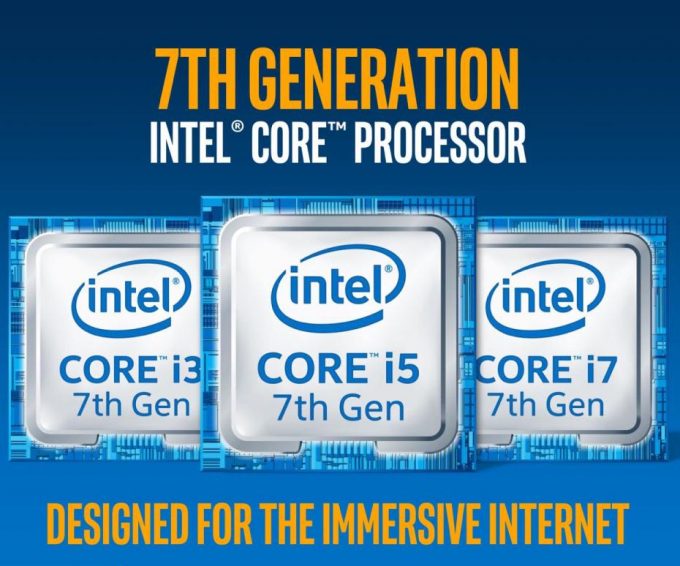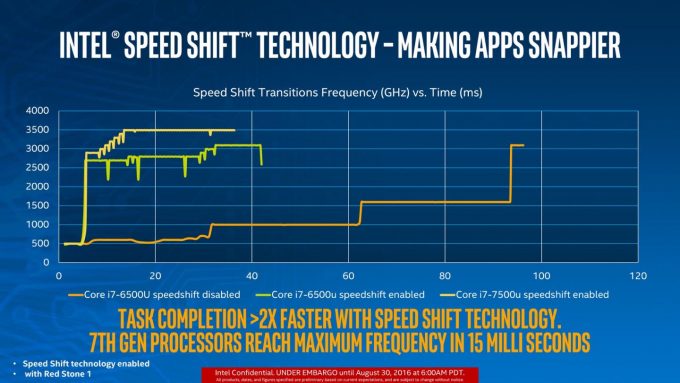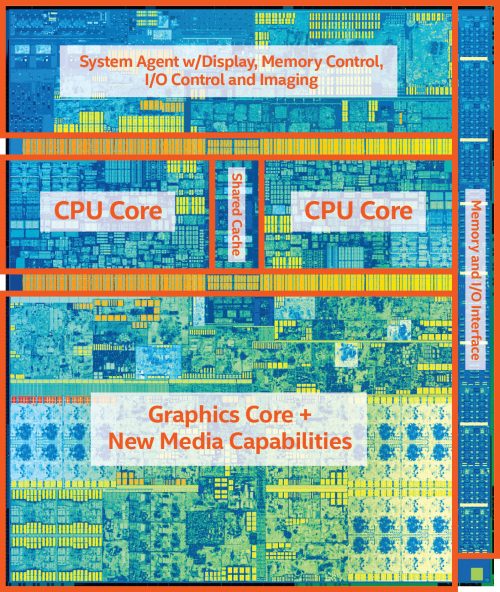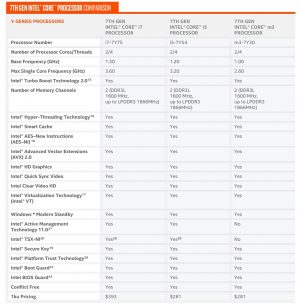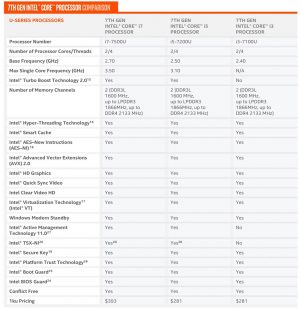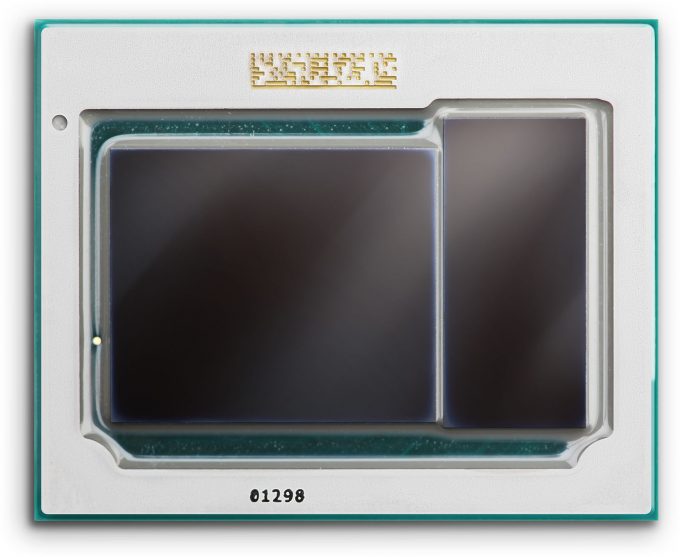- Qualcomm Launches Snapdragon 4 Gen 2 Mobile Platform
- AMD Launches Ryzen PRO 7000 Series Mobile & Desktop Platform
- Intel Launches Sleek Single-Slot Arc Pro A60 Workstation Graphics Card
- NVIDIA Announces Latest Ada Lovelace Additions: GeForce RTX 4060 Ti & RTX 4060
- Maxon Redshift With AMD Radeon GPU Rendering Support Now Available
Intel Starts 7th Gen Core Launch With Kaby Lake & Greater Focus On Power Efficiency
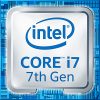
Intel has this week announced its 7th generation Core processors, codenamed Kaby Lake. This launch is a little different for Intel, as Kaby Lake is neither a “tick” nor “tock”. Instead, it’s an in-between release that focuses on refinement, and will hold us over until Cannonlake arrives. Let’s see what it’s made of.
Another year, another CPU launch from Intel with its very aggressive launch cycle of its new CPUs. However, this year is slightly different than the last decade or so, as it’s the first time that Intel had to put the breaks on its famous tick-tock strategy. Kaby Lake is the first generation launch that adds a third stage to the launch cycle of previous CPU launches.
Back at the launch of Broadwell, Intel announced its shift in strategy on how it will launch its CPUs in the future. While Moore’s Law isn’t quite dead yet, it’s certainly slowing down, and Intel delayed the launch of its 10nm process by an extra year. The tick-tock launch of process and architecture respectively has been replaced with Process, Architecture and Optimize. Kaby Lake uses the same 14nm process that started with Broadwell and Skylake, but is now a pure optimization rundown of both manufacture and architecture, on a slightly modified 14nm process called 14nm+.
Due to Kaby Lake being all about optimization, there aren’t really any headline grabbing developments. In fact, there is nothing to be excited about for desktop users at all, as this only marks the launch of the ultra-low power CPUs using the Y and U type processors often found in notebooks and ultrabooks. Desktop parts won’t come out until early 2017, so you can still buy those Skylake CPUs with some degree of confidence (especially with the likelihood of Kaby Lake being a drop-in replacement for Skylake).
While there isn’t really any exciting developments with Kaby Lake, that’s not belittling Intel’s engineers in the slightest, as there are still improvements and refinements to bring up, most notable of which is the near 500MHz increase in clock speeds for most of the CPUs.
Intel’s optimization on the manufacture process brought about some tweaks to the transistors, namely increasing the size of the gate. This lets the transistor hold its charge better without that pesky quantum tunneling effect from kicking in (electrons jumping outside of the gate material). The end result is faster switching speeds due to increased reliability, bringing about a 400-500MHz increase in frequencies (although mostly limited to the turbo frequencies, rather than the base clock).
Another tweak is to do with SpeedShift that was part of Skylake, and focuses on the processor’s ability scale its frequency under load. When a CPU is put under load, it typically increases its clock speed to cope with the spike, but this has a slight delay as it kicks in. Intel decreased this delay to below 20ms. This lets the CPU scale up faster and complete processing faster so it can step down again to save battery power.
The last major feature will probably have the biggest impact after the increased clock frequency, and that’s hardware acceleration of 4K video content and 10-bit HEVC/H.265 codec support (and 8-bit VP9 for all those YouTube videos). The power savings offered by this are quite significant, using a paltry 0.5 Watts of power on the GPU compared to the 10.2 Watts needed by an equivalent Skylake CPU. That’s quite the power savings, especially if you like to keep mobile and watch videos.
HDMI 2.0 and HDCP 2.2 will be made available as well, enabling 4K @60Hz, but DisplayPort will remain as 1.2, keeping the two standards almost in-keeping with each other. DP 1.3 is available on high-end GPUs from the likes of AMD and NVIDIA if you want to push 5K @60Hz. The clock speed increases on the CPU also transfer over to the GPU to some extent as well, despite being the same designs as found on Skylake.
There will be six new chips launching shortly, three low-power 4.5W Y-series processors that will be found in ultra compact systems like convertible tablets and Intel’s compute stick. These Y-series chips can be ramped up to 7W on a thermally sufficient device. The slightly higher-power U-series chips will fill the 15W market and appear in most low to mid-range laptops, and possibly a new generation of NUCs.
All six processors will be dual-core with hyperthreading, so four threads. The incredible thing is the top-end i7-7Y75 CPU, which is the 4.5W chip, can turbo clock up to 3.6GHz, which is 500MHz more than the previous Skylake-based m7-6Y75. That also shows the change in naming, since Intel decided to drop the m7 and m5 moniker for i7 and i5 instead… but keep m3. Yeah, don’t ask…
Beyond the low-power chips, not much is known. January 2017 will bring about the mid-range notebook parts, typically the 45W range, then possibly a couple months later we’ll see desktop parts introduced. If Broadwell’s launch is anything to go by, which used a similar launch strategy of low power first and high-end last, the Kaby Lake desktop parts are likely to be extremely limited.
This time next year, we may start to see the early signs of real change in the form of Intel’s first (but delayed) 10nm chips with Cannonlake. Now those will be interesting times as we see all companies battle the very limits of nano technology and quantum mechanics.
Support our efforts! With ad revenue at an all-time low for written websites, we're relying more than ever on reader support to help us continue putting so much effort into this type of content. You can support us by becoming a Patron, or by using our Amazon shopping affiliate links listed through our articles. Thanks for your support!




